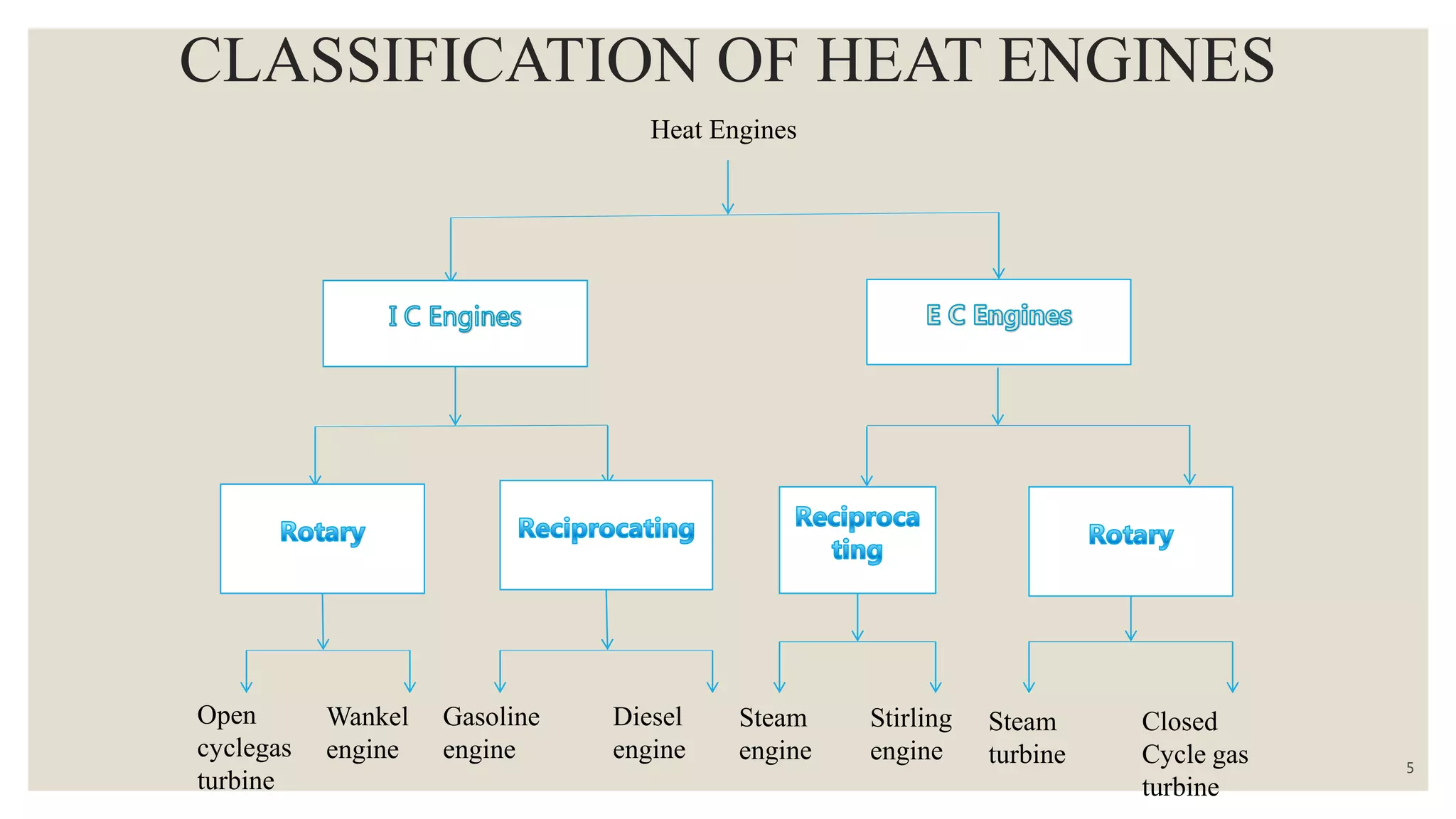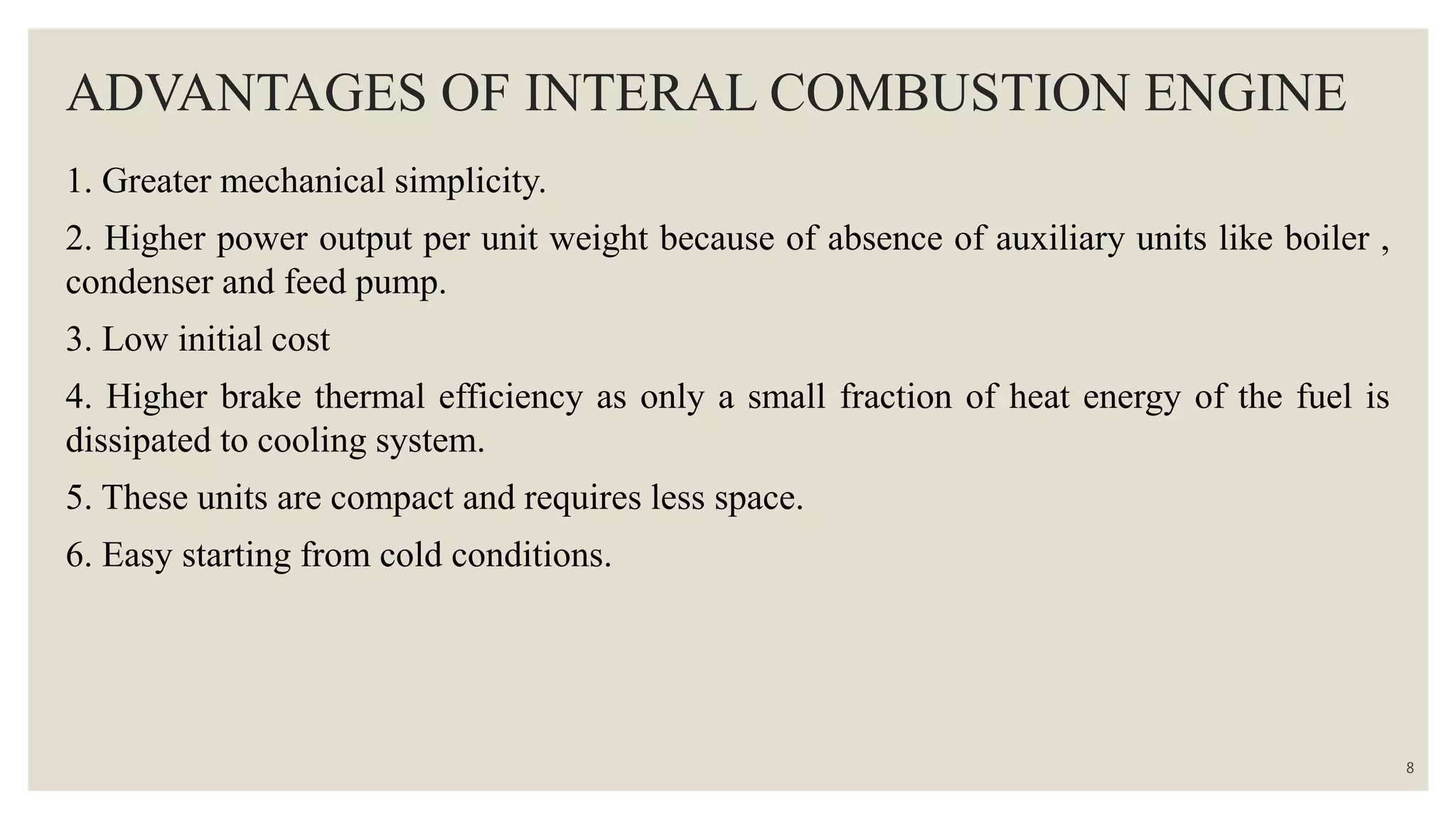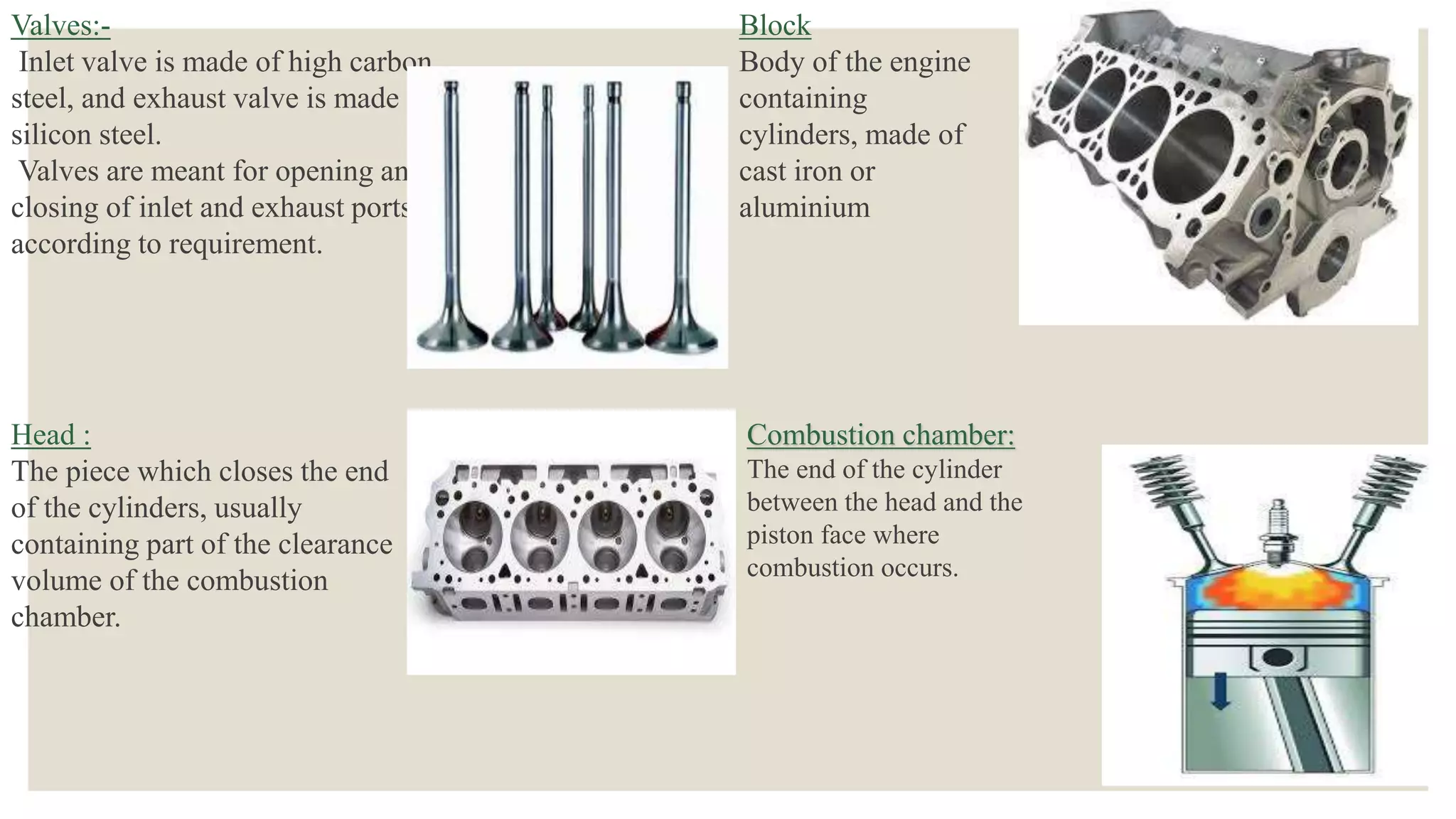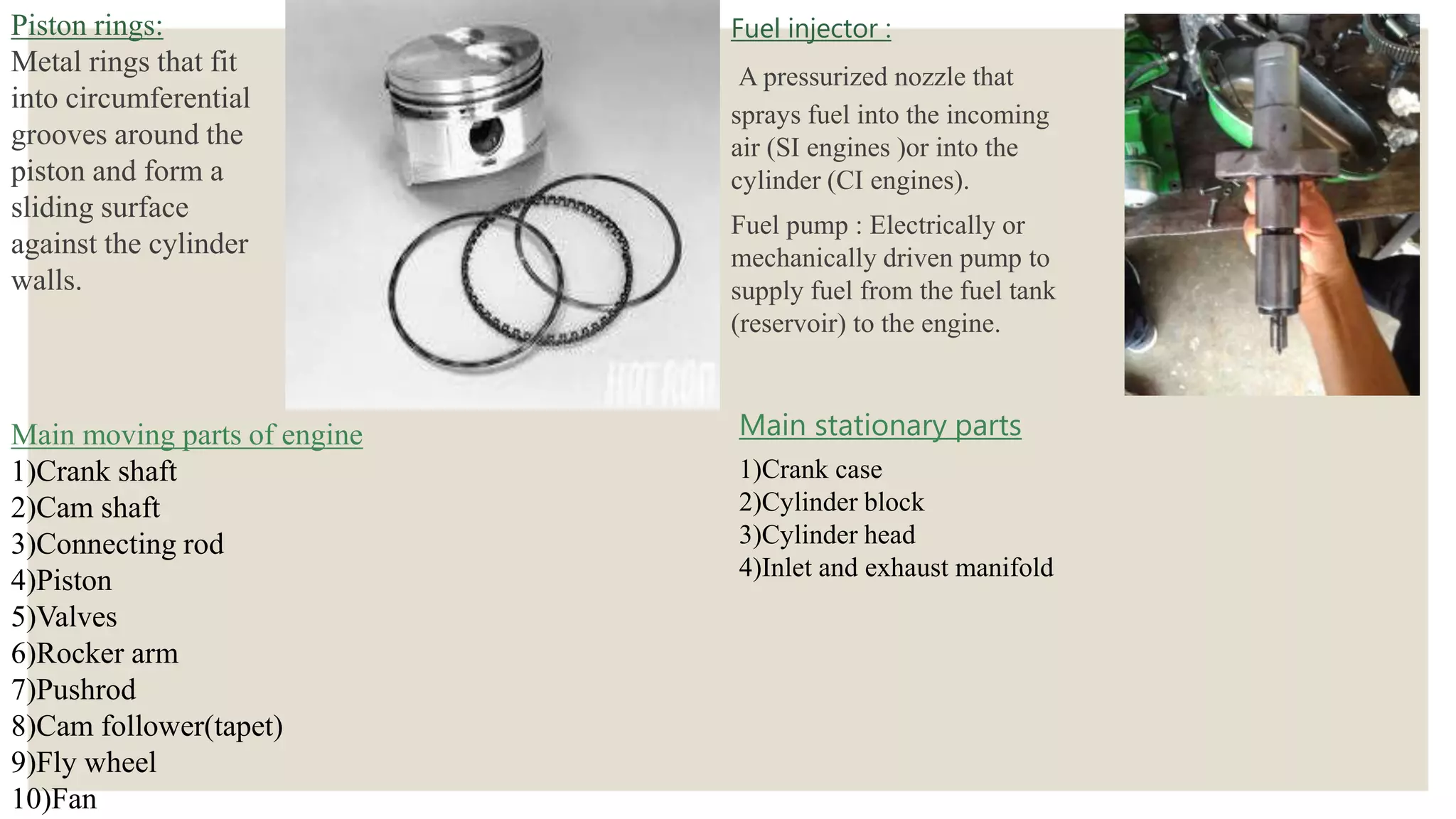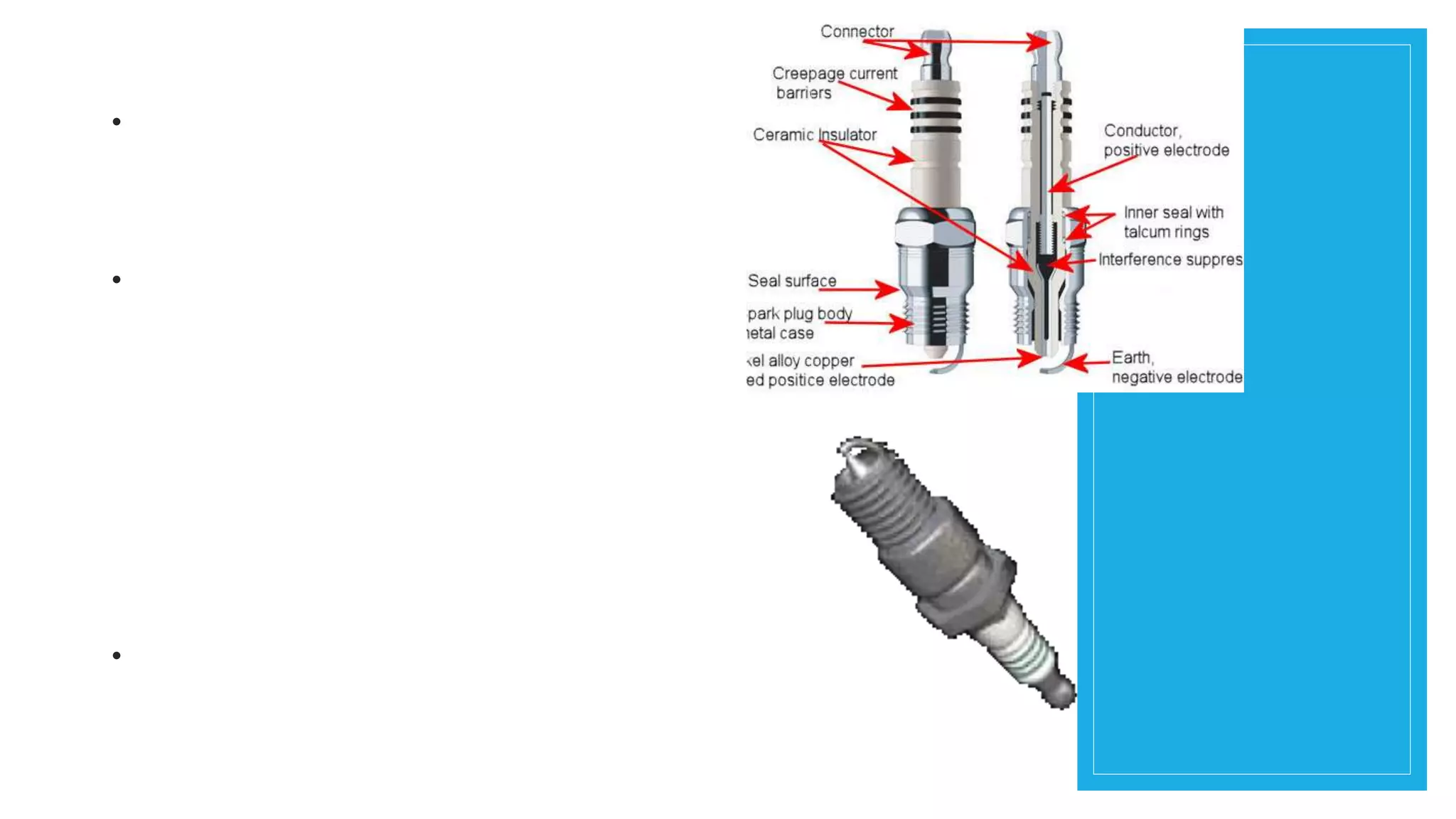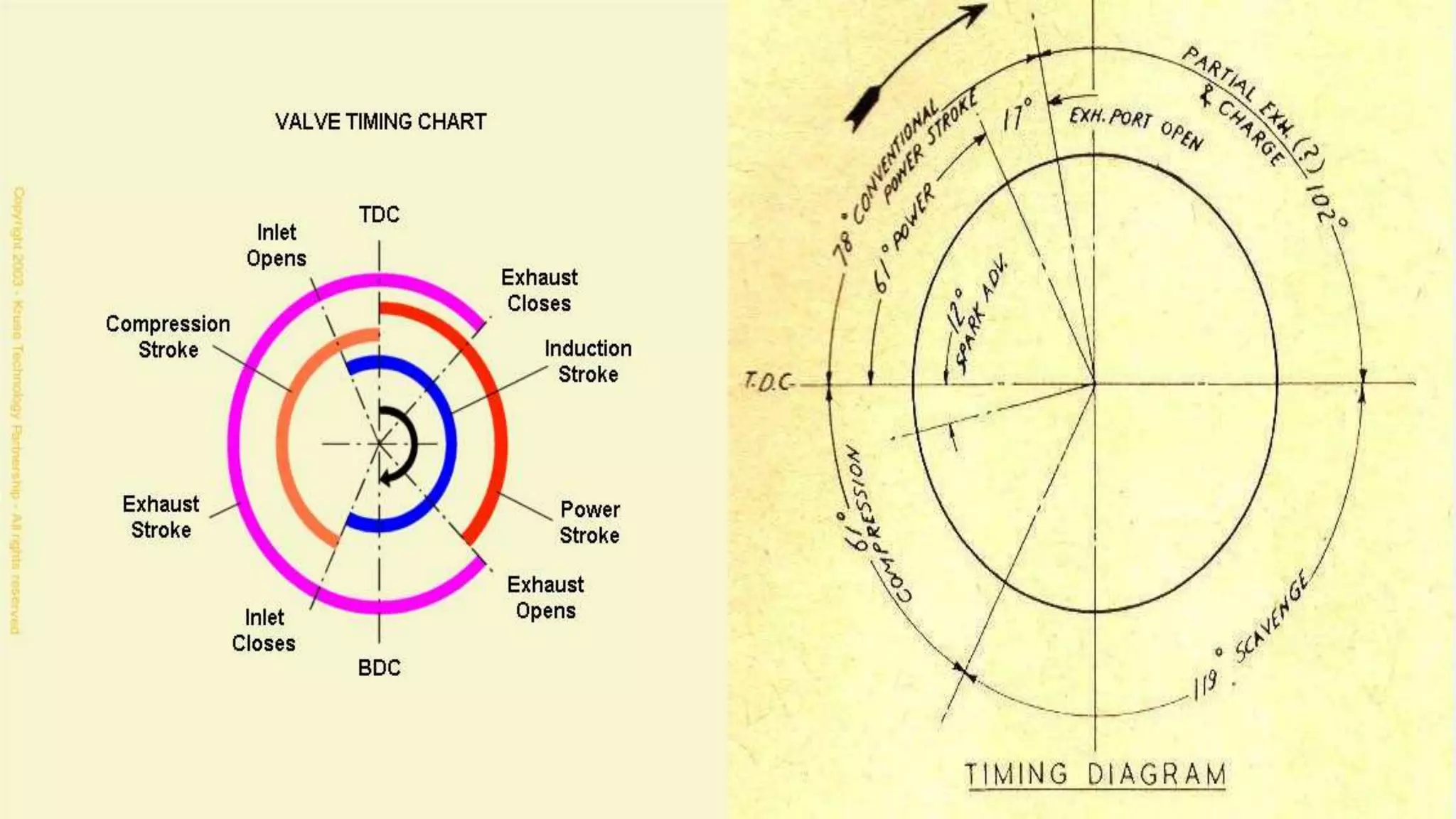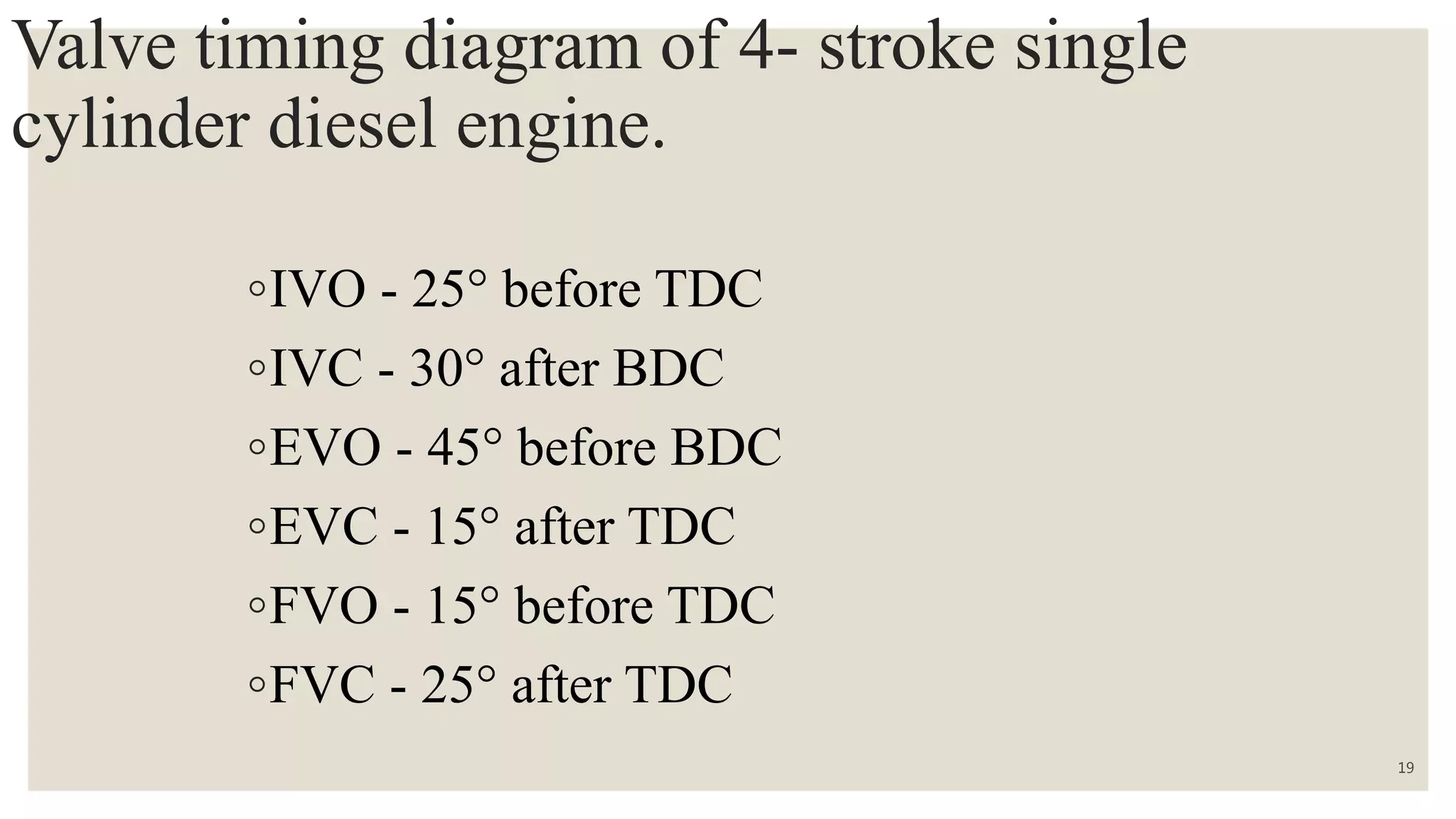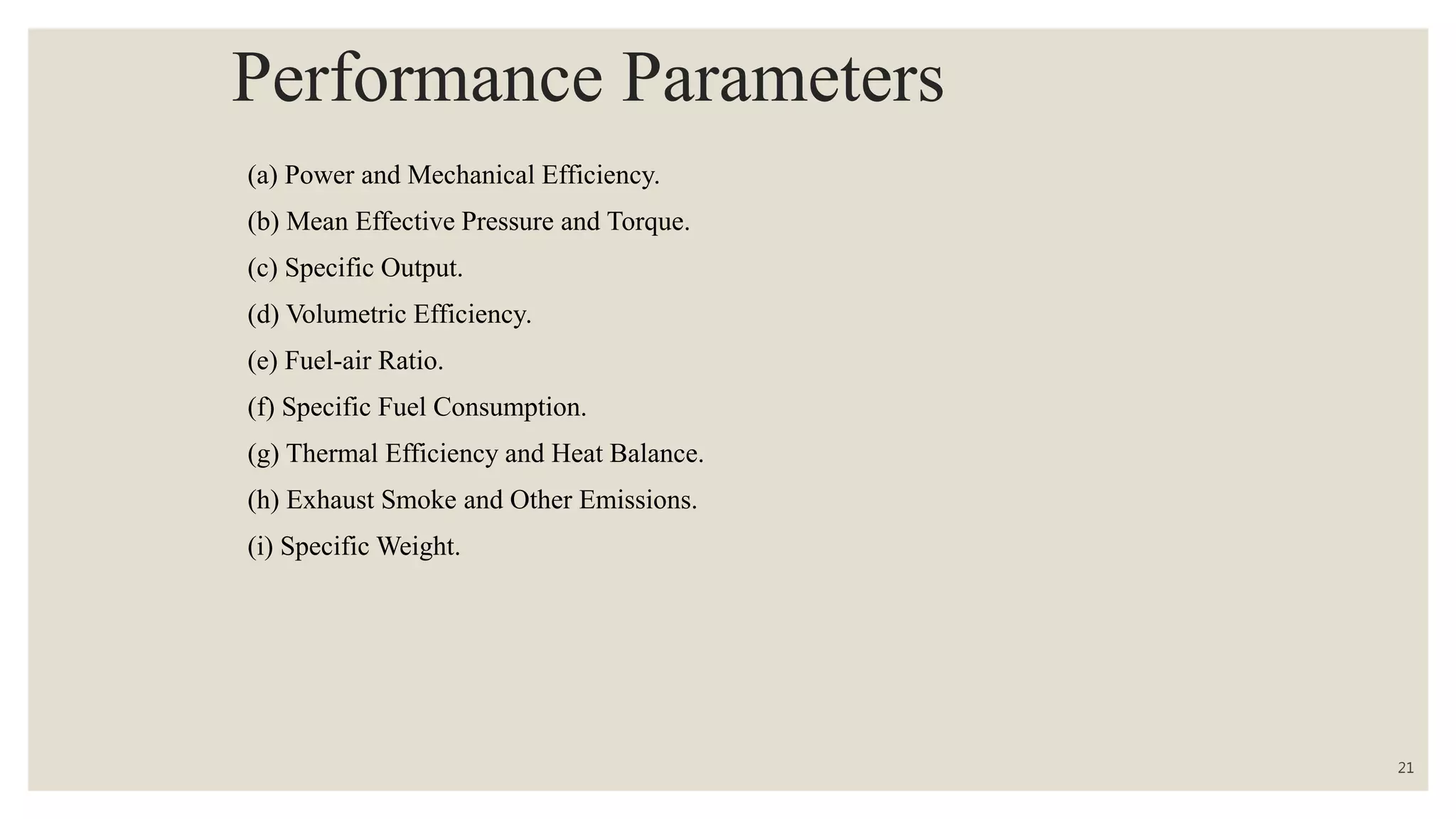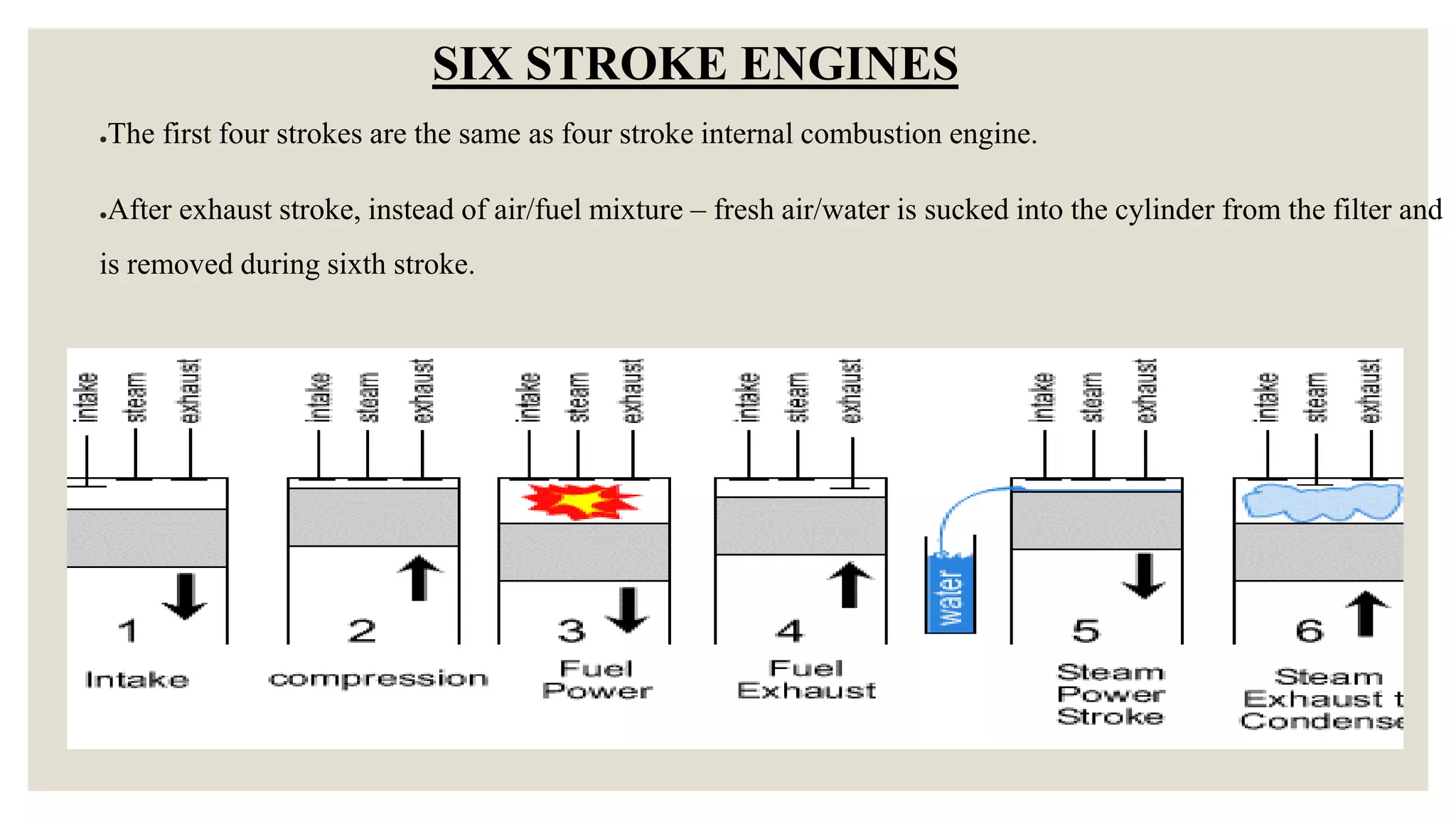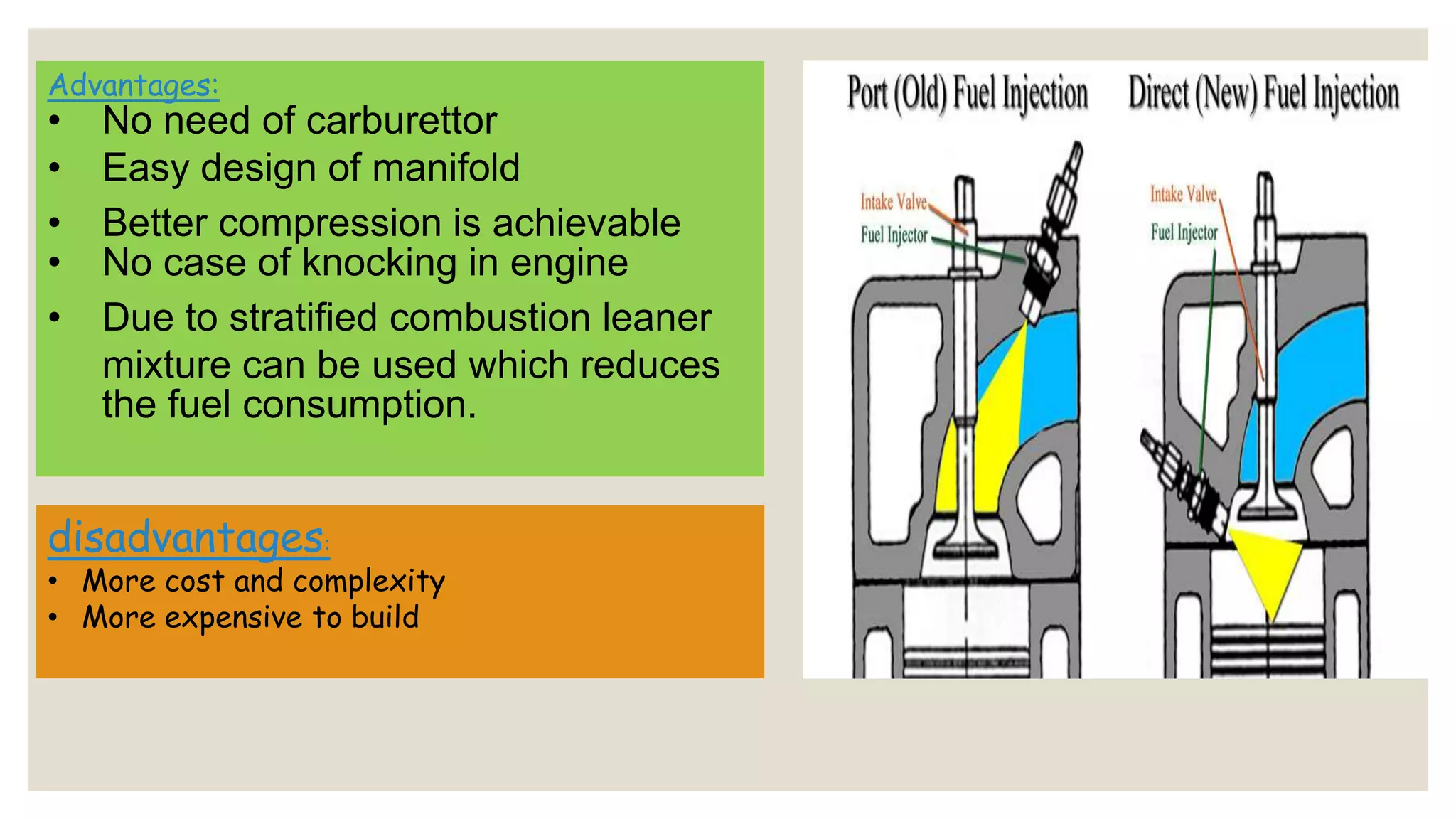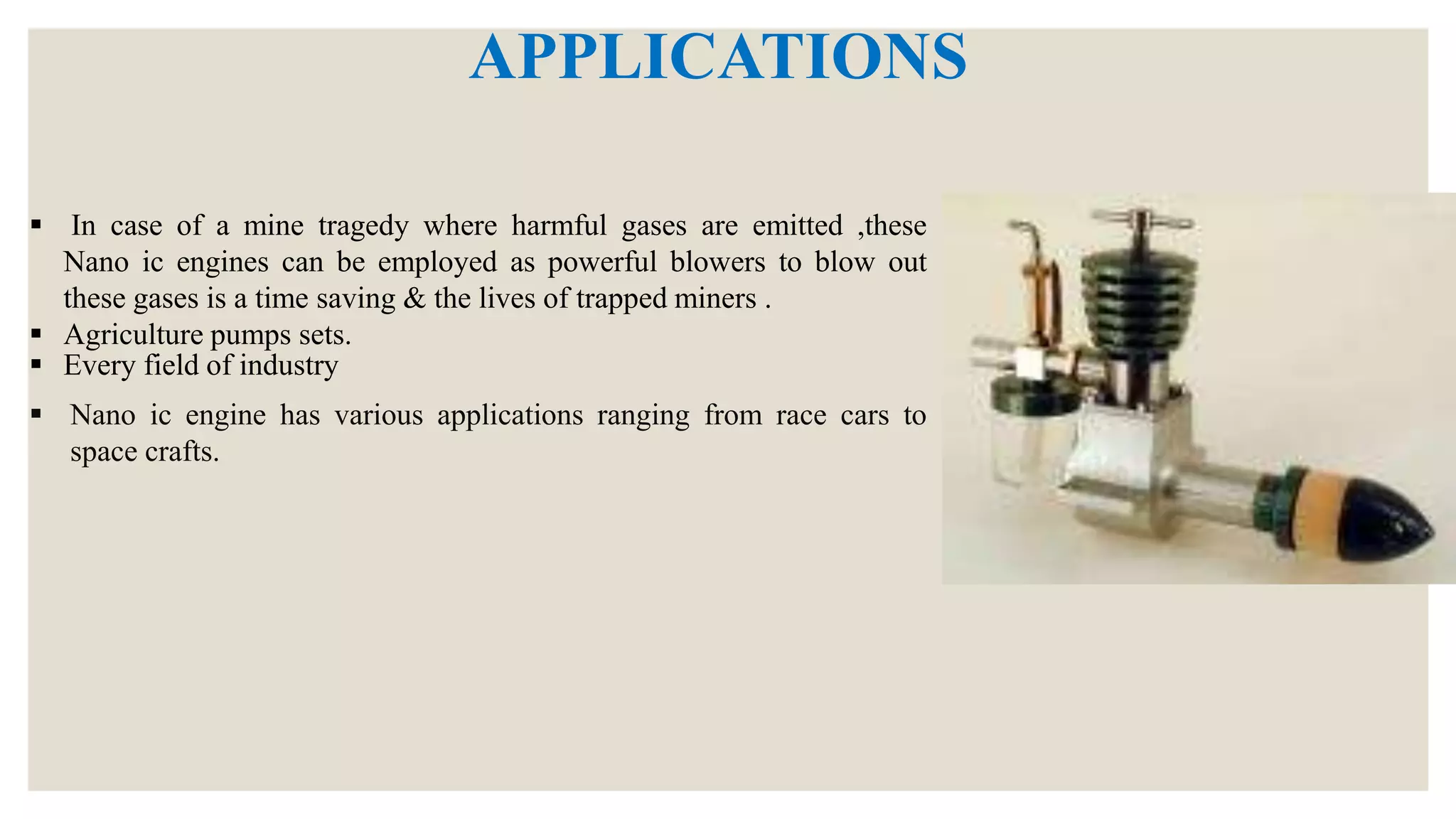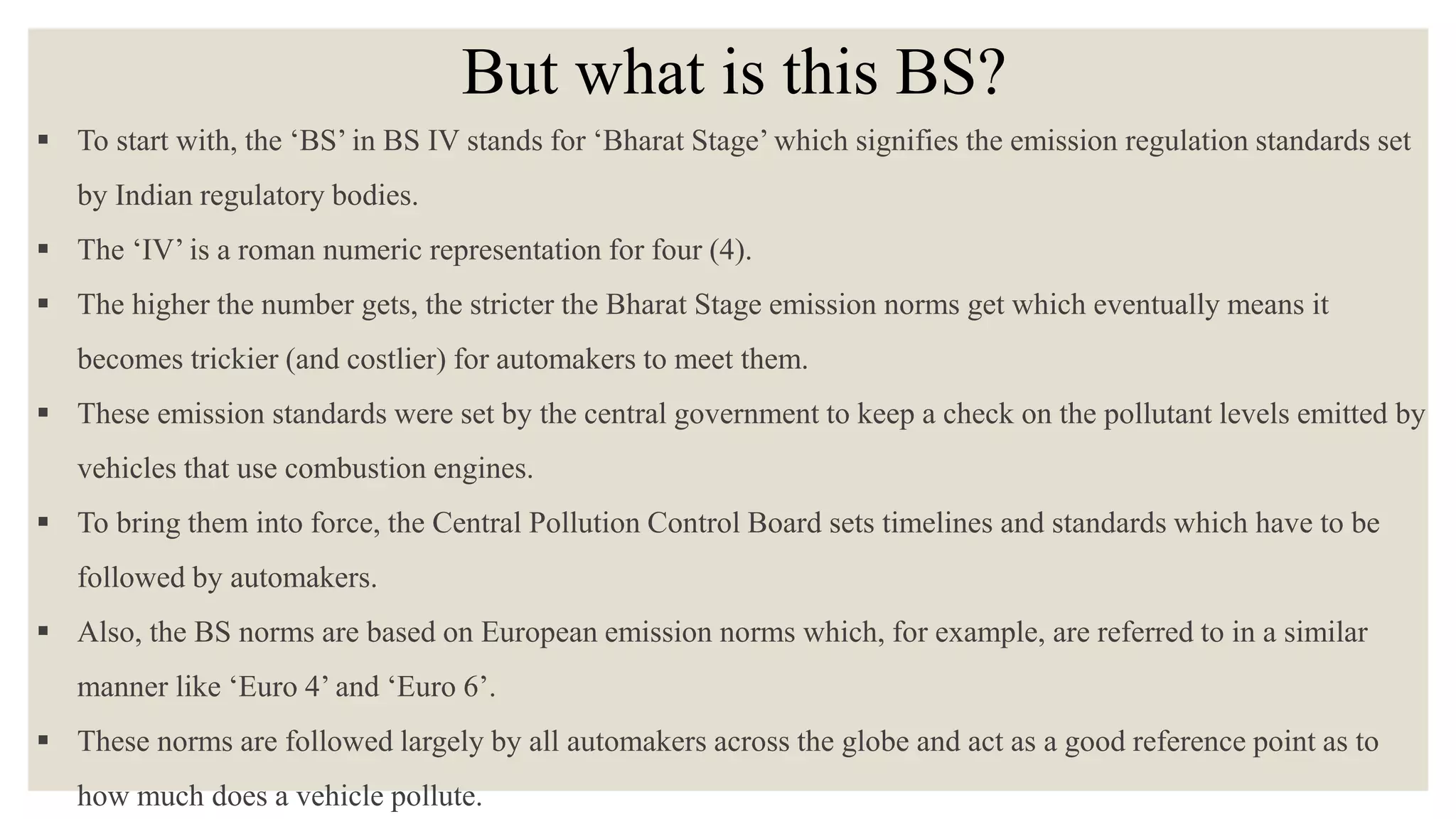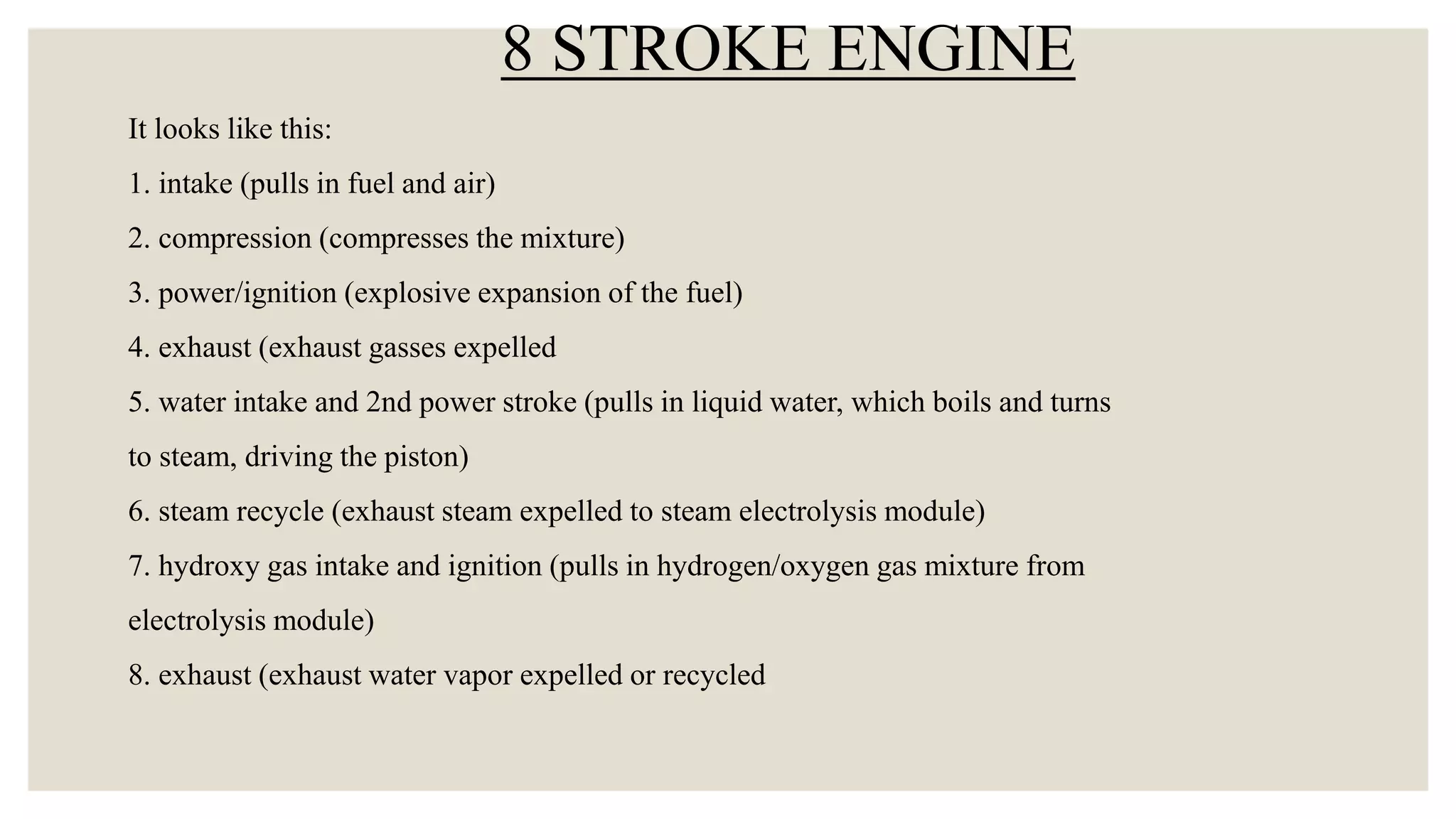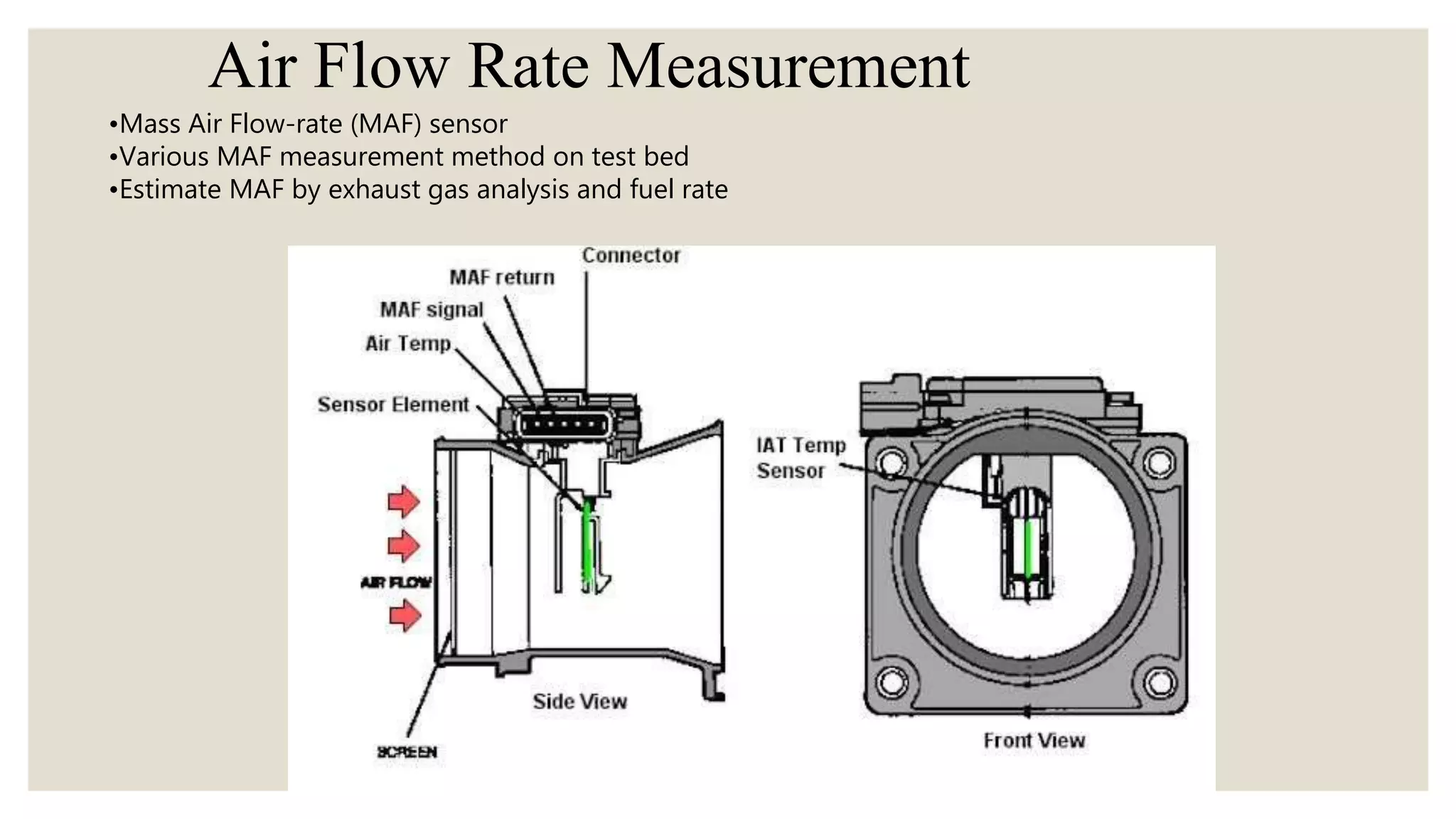This document provides an overview of internal combustion engines. It begins with an introduction that defines engines and heat engines. It then covers the history and classification of IC engines. The main parts of an IC engine are described along with advancements like direct fuel injection. Performance parameters and the operation of 2-stroke and 4-stroke engines are explained. Emerging technologies like digital triple spark ignition and nano engines are also discussed.




